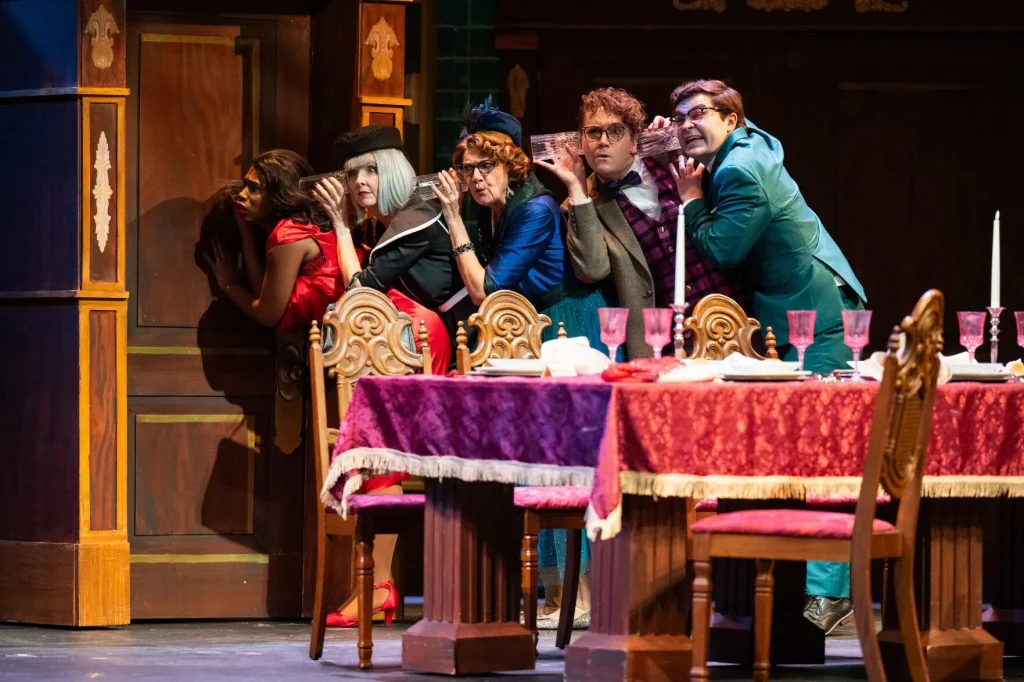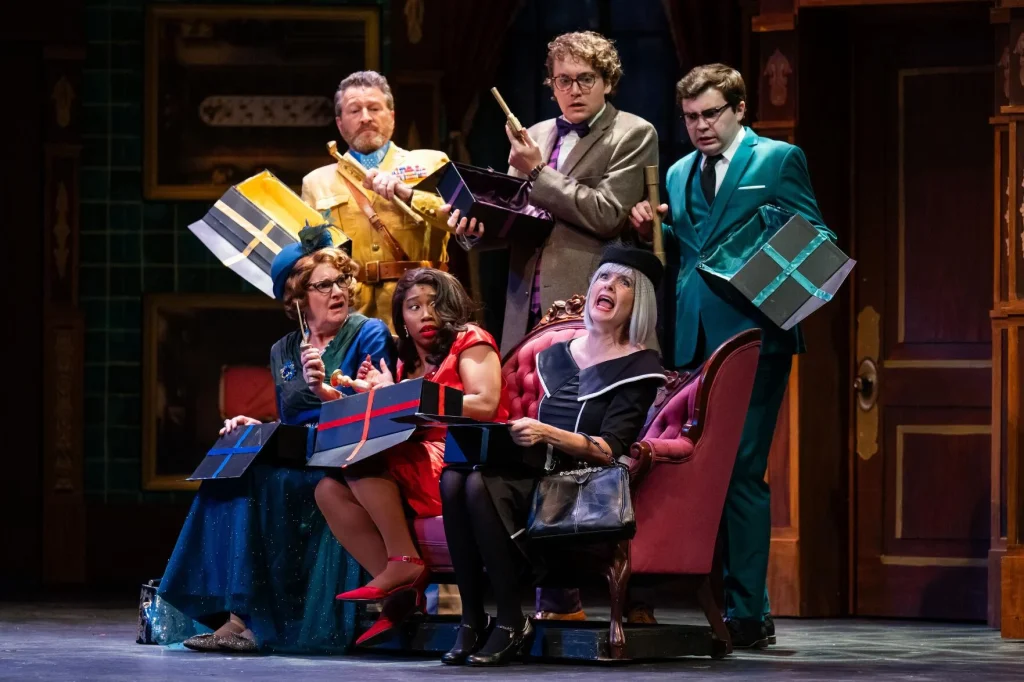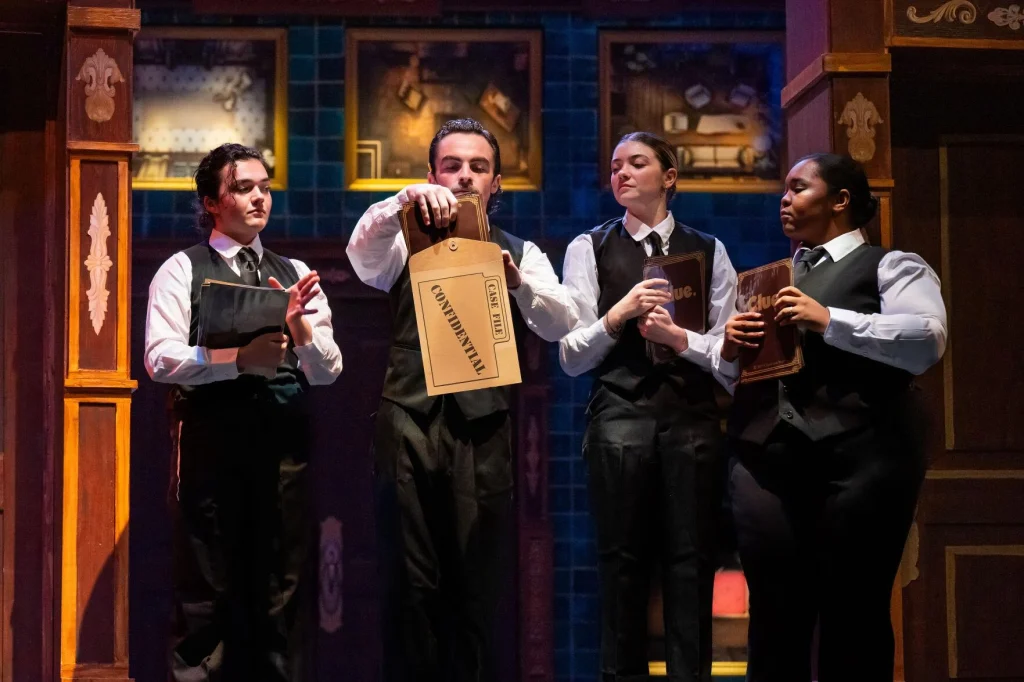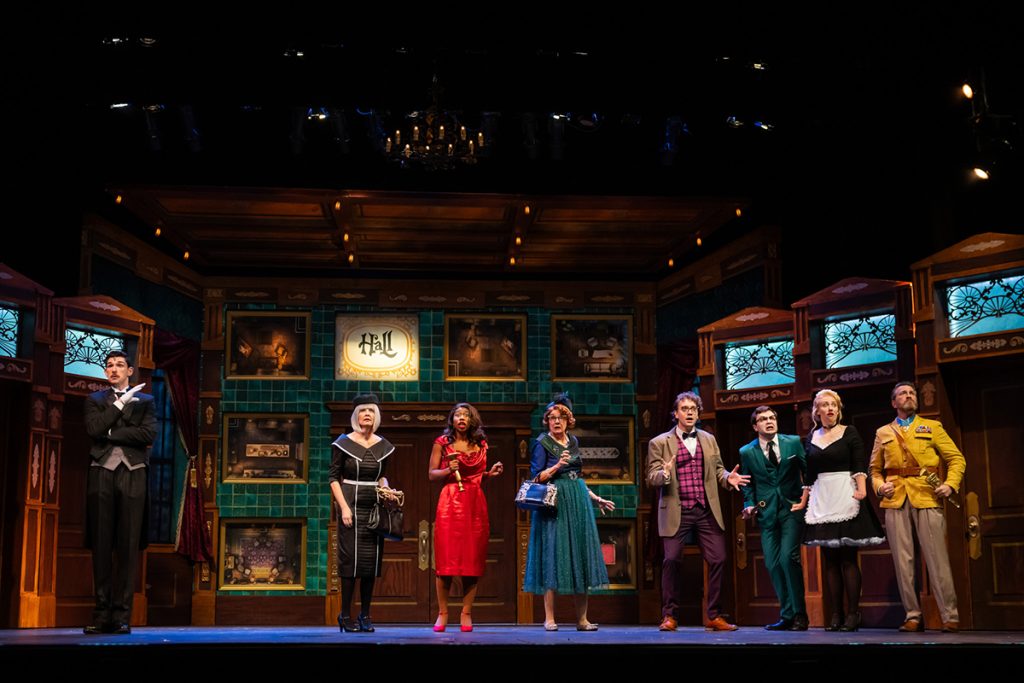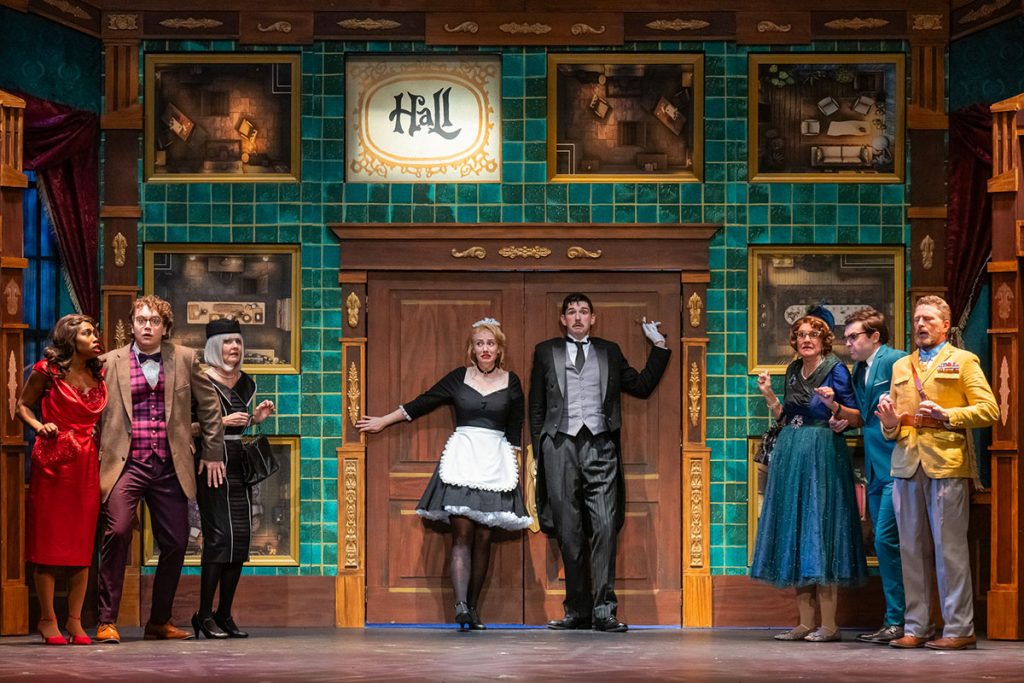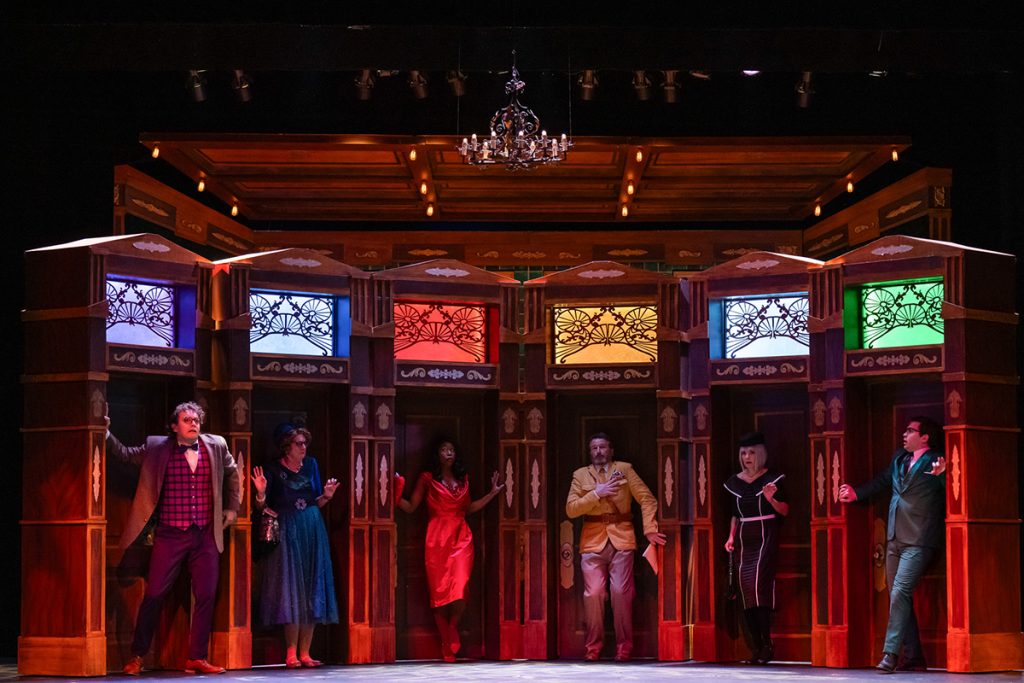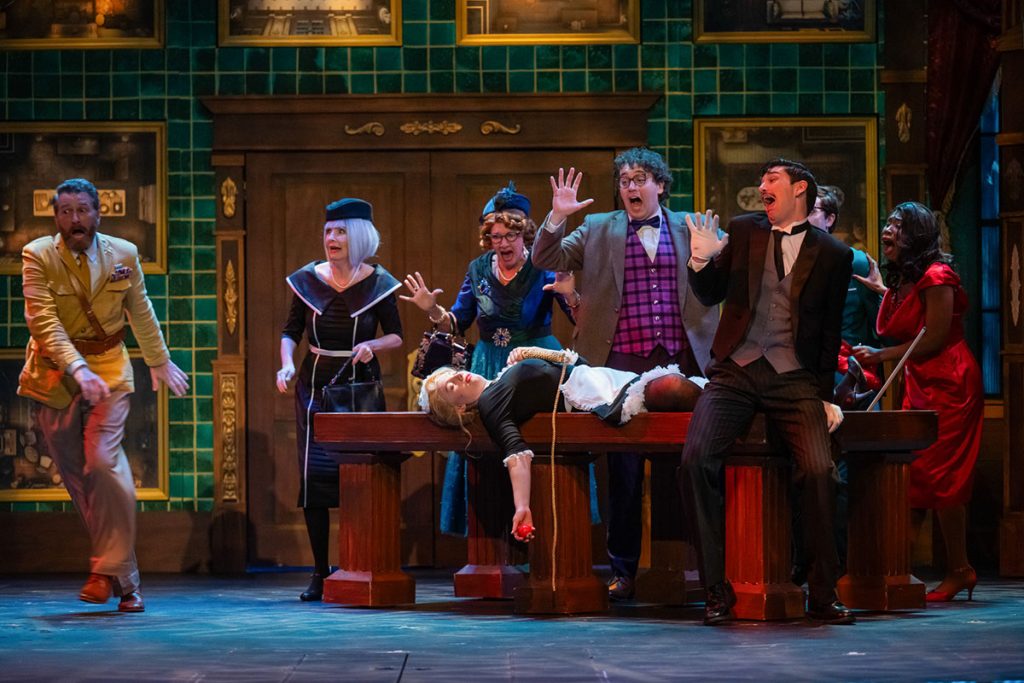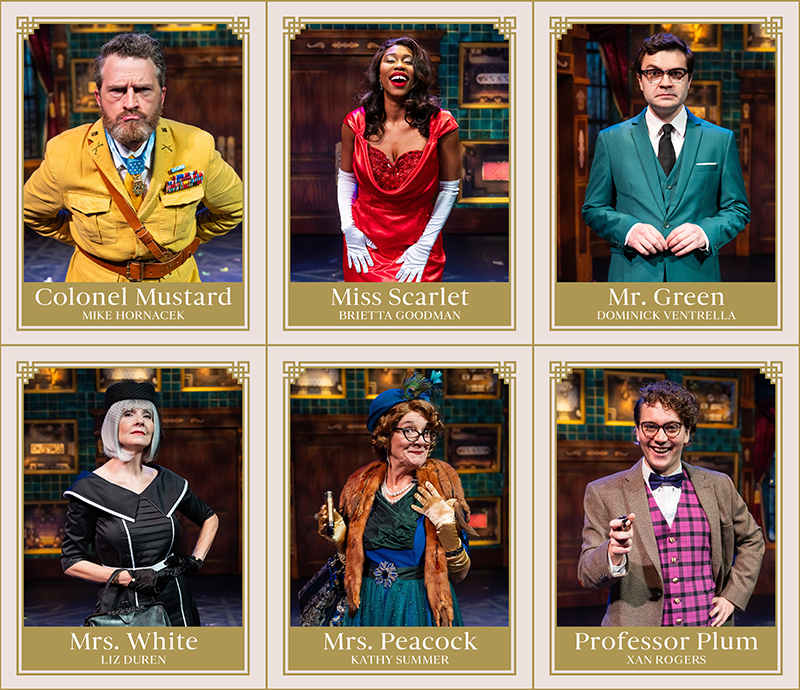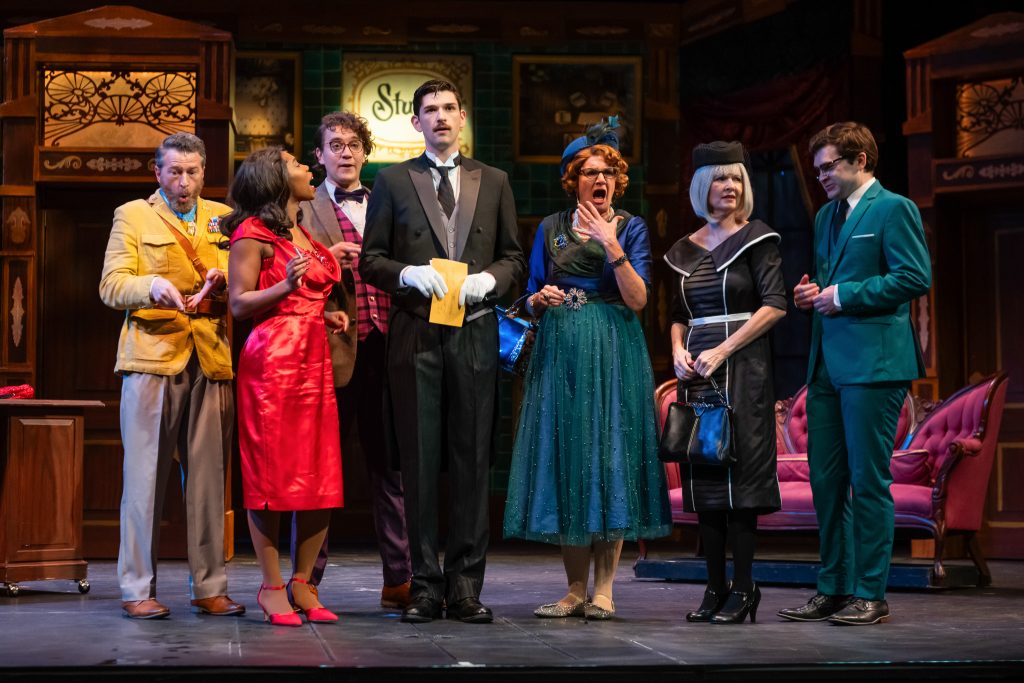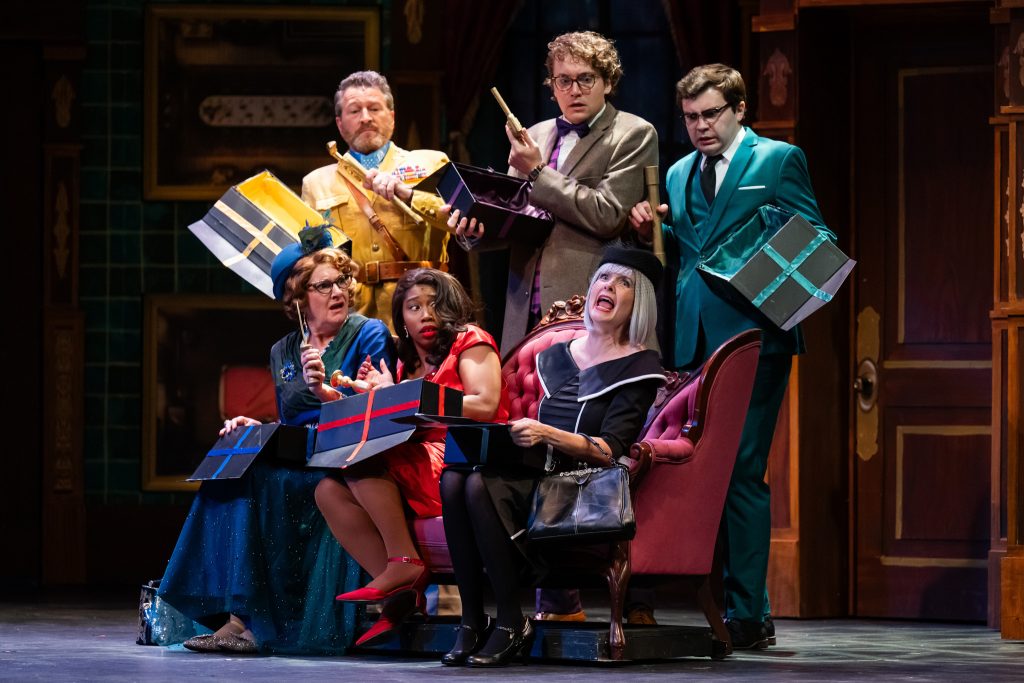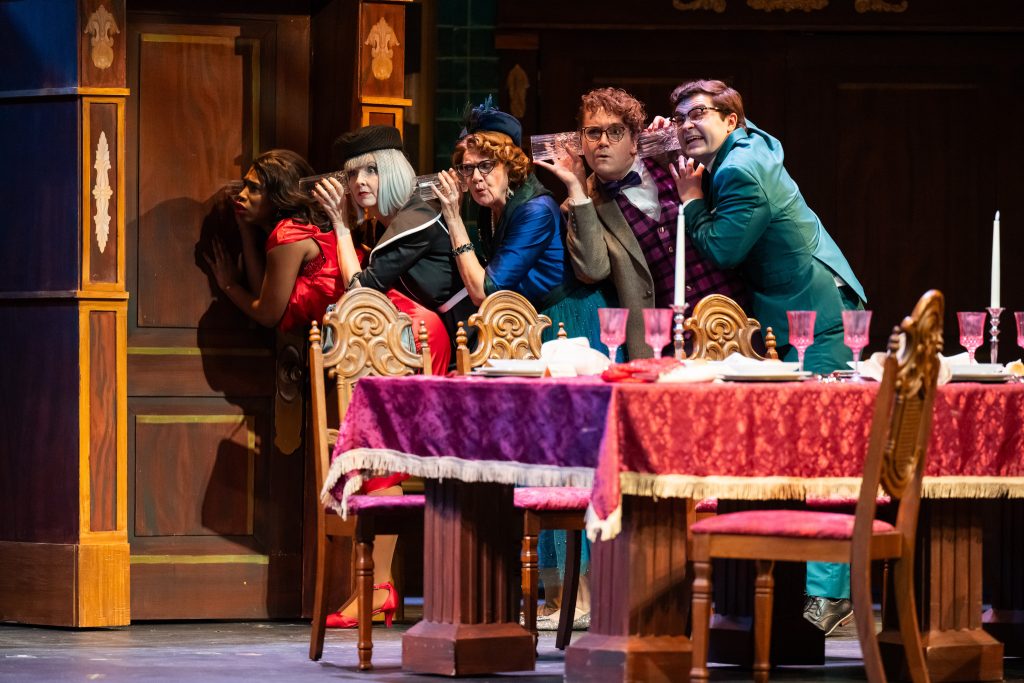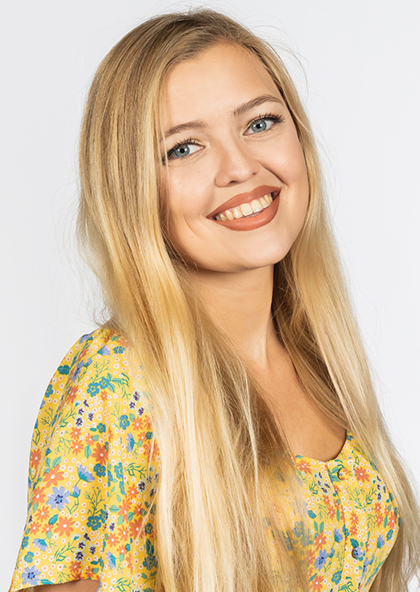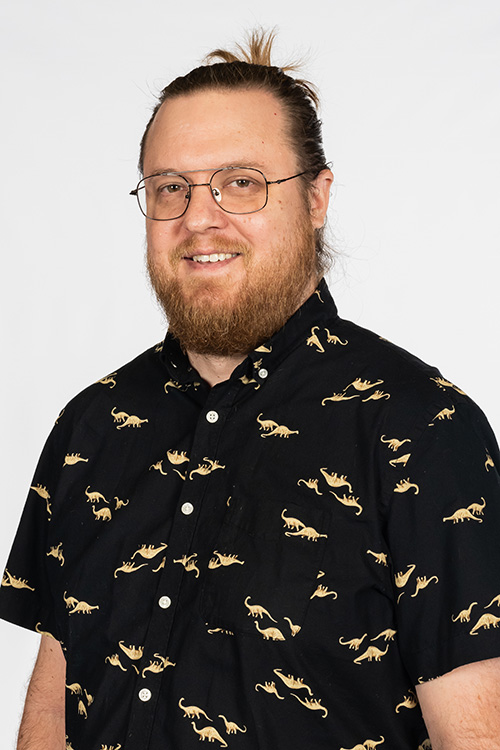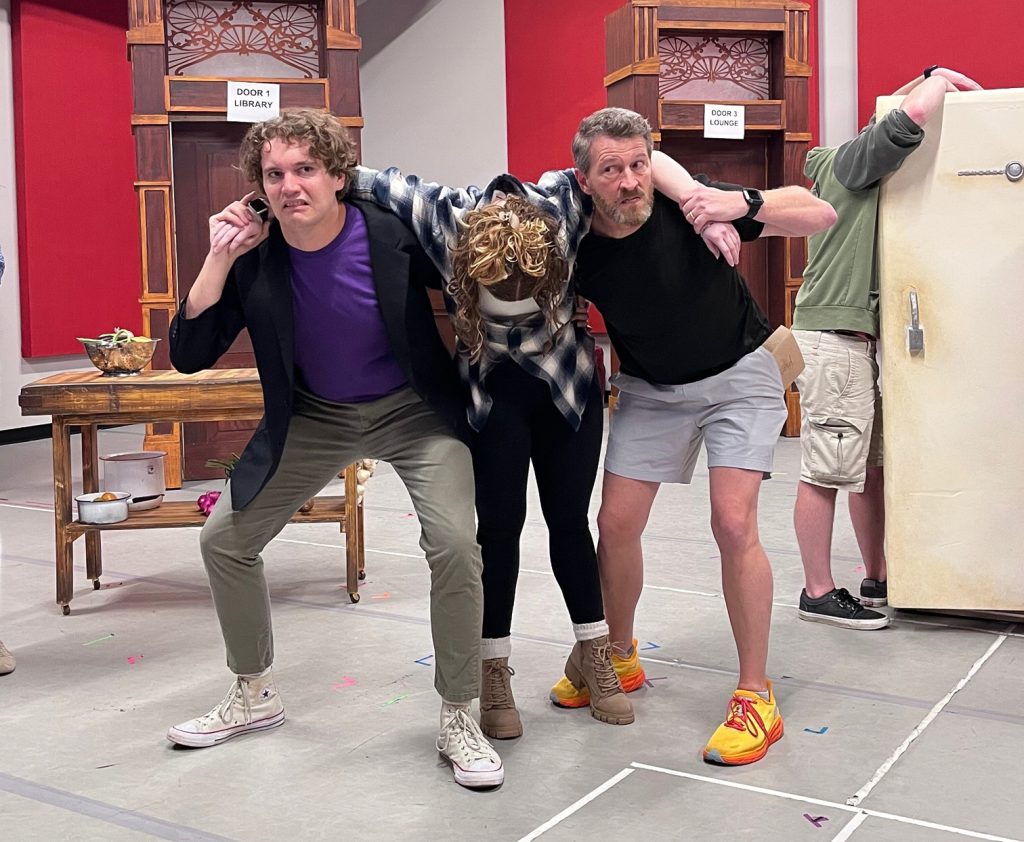We recently had the pleasure of interviewing Colin Waters, who has embarked on his directorial MainStage debut with CLUE: ON STAGE. Read more below to discover insights into his creative process while directing this uproarious murder mystery romp!
1) CLUE: ON STAGE is known for its mix of mystery, comedy and farce. What drew you to this particular play, and what aspects of the script did you find most exciting or challenging as a director?
CLUE: ON STAGE has always held such a special place in my life. Both the board game and the movie were staples of my childhood that left me with quite formative memories. The second I heard that Charleston Stage would be producing CLUE: ON STAGE this season, I was vying for the opportunity to direct it. I knew that this show would be a beast of a show to tackle. With a show that has such a culture surrounding it, there are many references and expectations accompanying it. While that is an incredibly exciting challenge to take on, it also was a bit daunting. I knew I needed to approach my direction very meticulously. The text of this show follows the storyline from the movie pretty closely with countless iconic lines sprinkled into the show verbatim from the movie. As a director, I had to teeter the line of paying homage to the cult film, while also taking my own approach on the show. To help spin our production into something nostalgic but also original on its own, I wanted to have audiences feel the influences from the movie and the board game. I wanted to recreate the feeling of sitting around the table playing the game of “Clue” with your loved ones: the competition, the strategy, the mystery.
Moving away from the conceptual challenges at hand, the biggest physical challenge at hand is how quickly this show moves. Not only is the pacing of this show vital to its success, but the audience is given so much information throughout the course of the night that will all lead to solving the mystery by the end of the play. We had to balance keeping the pace moving while not sacrificing all the information laid out for us. Throw in the fact that this play is set in a mansion with over 8 distinct locations, sometimes being in multiple rooms at the same time, and you have a cluster of directing challenges ahead of you. That being said, I direct with a very innovative, ensemble-driven style. I used that direction style to keep the show moving, never allowing the audience a second to be drawn out of the world we are crafting before their eyes.
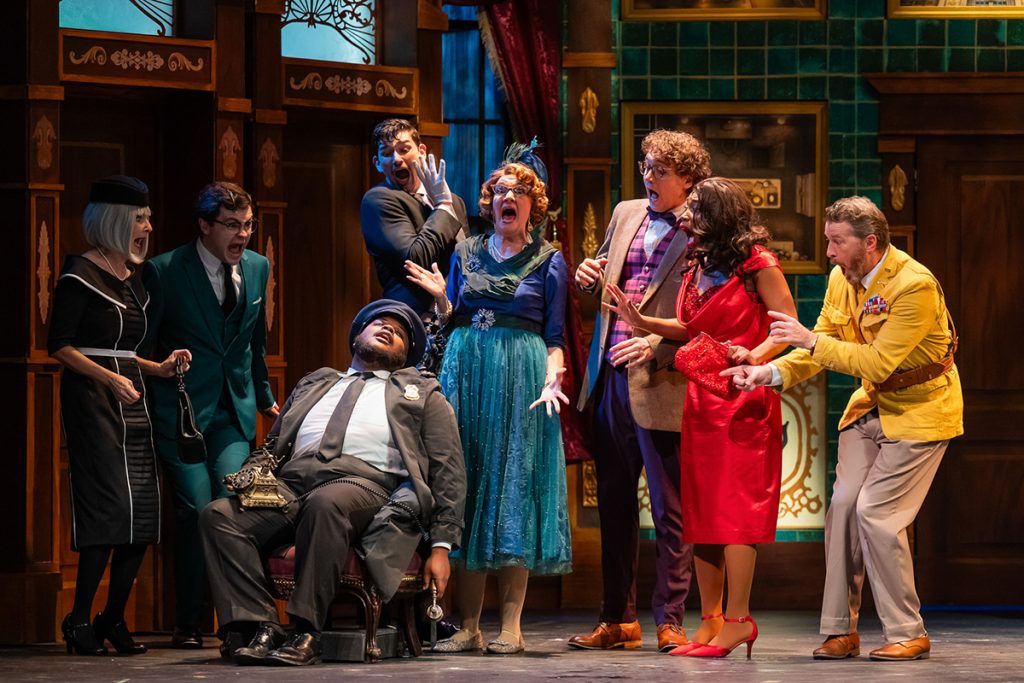
2) CLUE: ON STAGE features a diverse ensemble of characters, each with distinct personalities and quirks. How did you work with the actors to bring out the individuality of each character while also portraying the iconic moments that loyal film and board game enthusiasts have come to love?
This was one of the very first things I discussed with the actors. I began this process with one question. How do we as performers honor the incredibly recognizable and unique characters made famous by the movie, while still bringing our own artistry to the stage? Since this show is all about the games we play, I encouraged the actors to explore how their character plays “the game.” To keep their longevity in the story do they use flirtation as a tactic, do they minimize their threat level around more explosive characters, do they over-exaggerate their personality to draw others in? Once each actor discovered their gameplay, I introduced the concept that this show is very meta. The show follows a game, within a game, within a game, within a game. At its core, we have 6 extremely diverse personalities: Green, Scarlett, Plum, Mustard, White and Peacock. These are the characters that know the least about the game they are playing. Their goal is to figure out who is blackmailing them and eventually who is committing the murders in the house. Since they are at the center of this universe they have the most amplified personalities. The next layer outside of these characters is any of the characters that had prior knowledge as to the game that was being played that night: Wadsworth, Yvette, Mr. Boddy, The Cook and so on. These characters had some sort of involvement in this evening’s festivities, whether they planned the night, helped execute the vision, or were just one of the informants giving tips to the blackmailer. Their characters are more subdued than the core 6, but they still have their own exaggerated characteristics and a clear vision of their style of “gameplay.” Finally, our ensemble represents our audience, the ones playing the game of “Clue.” They have the least intense personalities because they are the furthest removed from the stakes of the game. Instead, they are on the outside looking in. They see what the other characters fail to notice.
Watch CLUE: ON STAGE’s show trailer below!

3) The play typically takes place in a mansion with multiple rooms and hidden secrets. What was your vision for bringing the mansion to life on stage, and how did you create a sense of space and atmosphere that enhances the storytelling?
As I mentioned earlier, this was one of the biggest physical challenges this show presents. How do you successfully move through 8 different rooms in a house, giving each room its own distinguishing characteristics, without the entire stage feeling cluttered? After many creative brainstorming sessions with Adam, the scenic designer, we landed on a concept that established the intricacies of the mansion while allowing freedom to move from room to room. I knew that I wanted to incorporate a physical representation of the board game somewhere on the set, and Adam conceptualized the idea that the set was full of doors leading to different rooms throughout the house. As we enter a room, the doors move throughout the space opening us up into the room. At the same time, he brought the board game vision to life by allowing audiences to see the map of the house at all times, signifying where in the board game our characters are located.
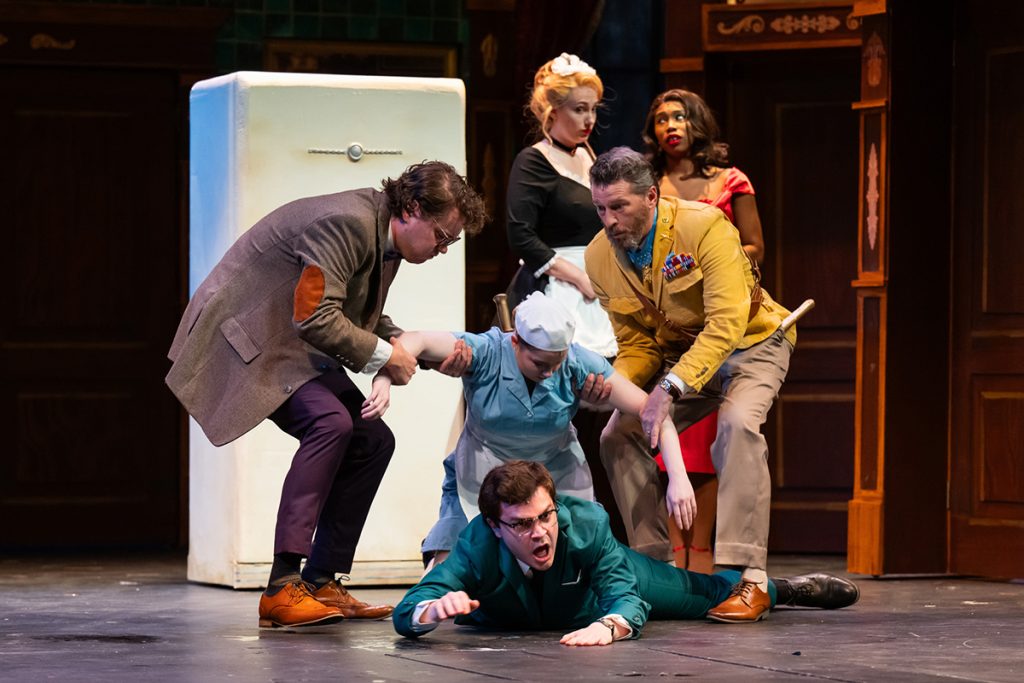
4) CLUE: ON STAGE often involves physical comedy, quick entrances and exits, and moments of slapstick humor. How did you choreograph and stage these comedic elements to maximize their comedic impact?
I knew to fully capture the pace of this show, the blocking and choreography had to rise to the same level. This show is riddled with a complex storyline, I wanted the movement of this show to mirror that complexity while still being controlled and beautiful. Audiences can expect transitions that flow from one room to the next. As characters move throughout the house, we get an inside perspective as to what they might be thinking. The show relies deeply on physical comedy and the element of surprise, I mean there are several murders revealed over the course of the show. Eliza Knode, Resident Actor, took on the challenge of Fight Directing this show. Her expertise elevated the physicality of this show to another dimension I could only have dreamed of.
5) Collaboration with the rest of the production team is crucial in theater. How did you work with the set designer, costume designer, and lighting designer to ensure that the overall vision of the production was cohesive?
I cannot sing the praises of our production team enough. Everyone who worked on this show poured their heart into it and it absolutely shows. Each designer incorporated different elements that drew inspiration from the play itself, the movie, and the board game. A large portion of the success of this show lies in how harmoniously each design element works with one another. Every design can stand alone but also enhances the other designs around it. Our scenic design, brought to us by Adam Jehle, immerses us into a Victorian-style mansion with a physical representation of the board game plastered on our back wall. This map of the board game doubles as a map of the house, often helping indicate where exactly in the house each scene takes place. Our costume designer, Hayley O’Brien, highlighted the silhouettes of 50s era clothing, while also blending the iconic colors of original game pieces into her costume design. Aline Toloto, our properties designer, incorporated many historically accurate props to help build the world of the show; however, she also stepped into the theatrics of the board game and gave nods to some of the classic board game pieces. Caleb Garner’s lighting design is nothing short of superb. He used lighting to help emphasize the theatricality of the movie and juxtaposed that with mood lighting to help creep in the air of mystery. Finally, Luke Walchuk, our sound designer, composed an original score that’s equal parts grandiose as it is nuanced. Each design element serves as another character working within the ensemble of this show. All of our incredible staff in the costume and scene shops helped bring these beautiful designs to life and I couldn’t be prouder and more impressed with the outcome.
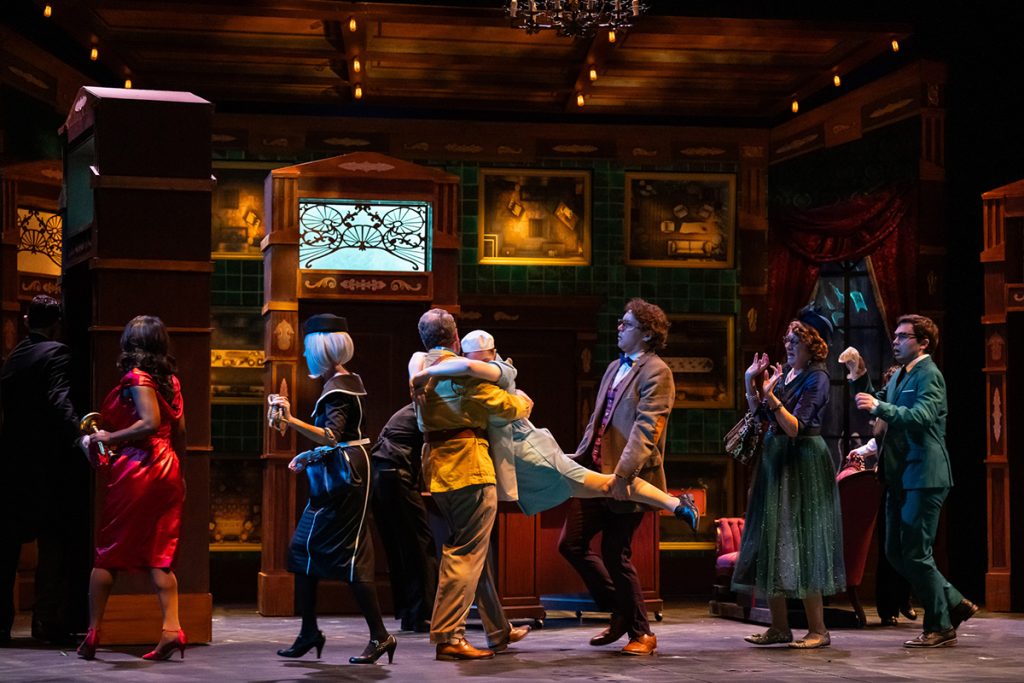
6) Finally, what excites you the most about our audiences experiencing CLUE: ON STAGE?
I am excited to have a different conglomeration of audiences. Some audiences will be die-hard CLUE movie fans. Ones that know every single line from the show and the cultural relevance it continues to leave on society. Some audience members will be board game superfans. They might be strategists, game-players, people who love the thrill of trying to solve the mystery before anyone else. Some audience members will be theatre lovers. People who may have no prior connection to the movie or board game, but are drawn to this show solely for their love for theatre. As someone who shares a little bit of all three of these audience personalities, I wanted to ensure that everyone would leave this production buzzing about their specific love for this show. I think this show will mean something different to every audience member who sees it, and I absolutely cannot wait to be surrounded by hundreds of others every night as we experience this show together.
Get your tickets to see CLUE: ON STAGE, running October 27th – November 5th, at CharlestonStage.com.
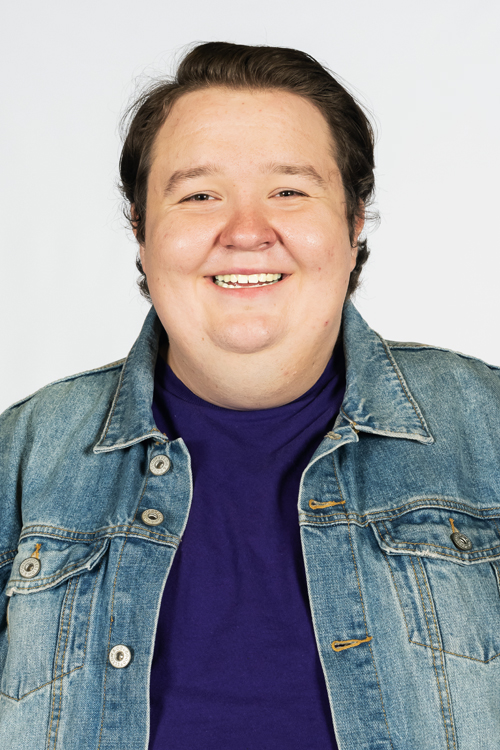
Colin Waters is ecstatic to make his Mainstage directorial debut with Charleston Stage. Originally from Northern Kentucky, Colin got his B.F.A. in Acting and a double minor in Musical Theatre and Arts Administration from Western Kentucky University. Clue: On Stage marks Colin’s 25th production with Charleston Stage, acting and directing. Colin’s previous Charleston Stage directing credits include: Charlotte’s Web (Season 45), Bright Star (Asst. Director), Treasure Island (Season 45), The Best Christmas Pageant Ever (Season 42). Some of Colin’s favorite Charleston Stage acting credits include: The Addams Family (Uncle Fester), The Play That Goes Wrong (Robert/Thomas Colleymore), Of Mice and Men (Lennie), Footloose (Willard), Bright Star (Mayor Josiah Dobbs), Beauty and the Beast (LeFou), The Curious Incident of the Dog in the Night-Time (Voice 4), Shear Madness (Mikey) and Elf (Santa Claus). Colin was recently named the Best Actor in the 2023 Best of Charleston City Paper Awards. You can find Colin on Instagram: @thepapacolin

